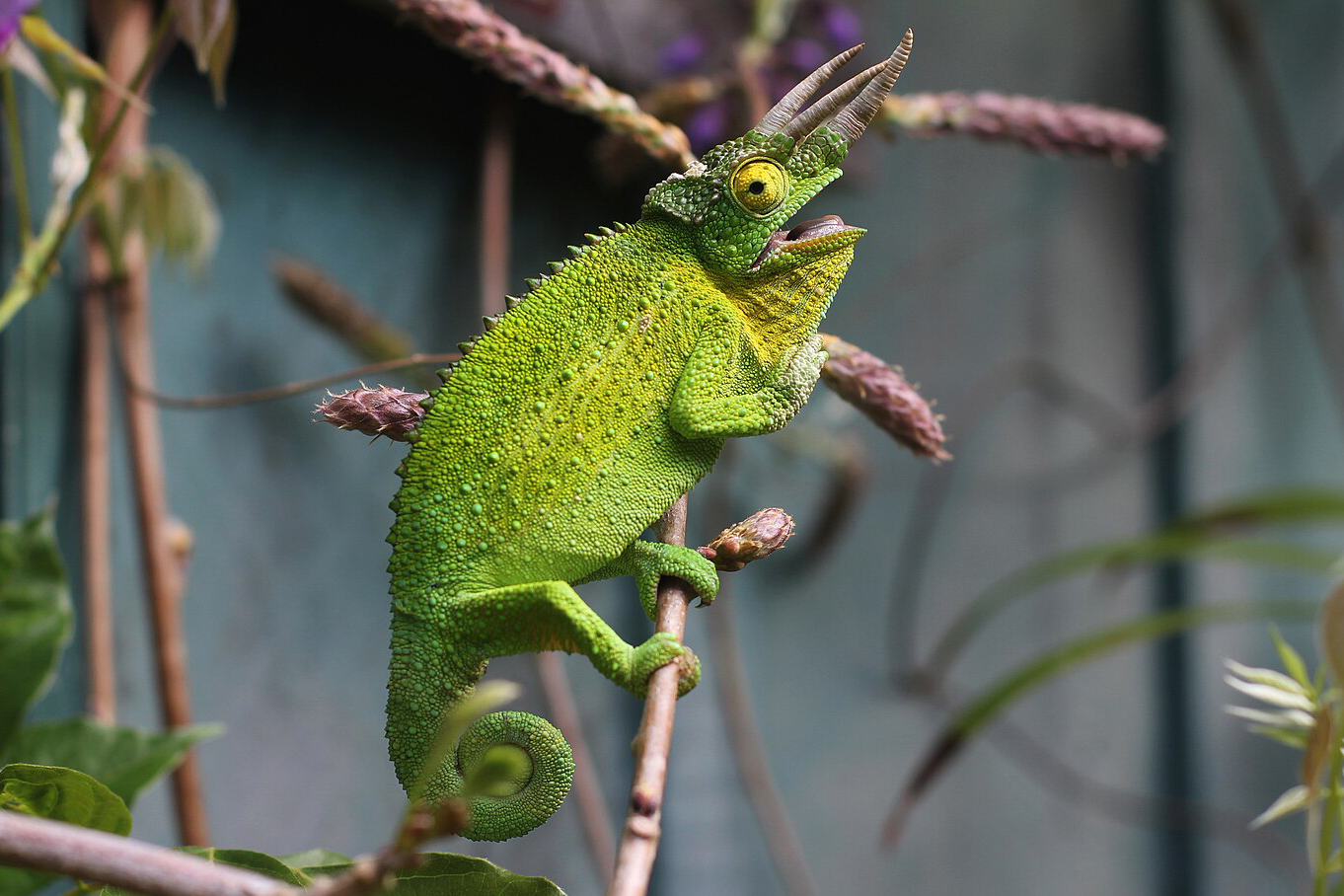Many chameleons show strong sexual dimorphism, meaning that the males look very different from the females of the same species. Bright colours, dorsal sails and bizarre rostral appendages are among the best-known sexual characteristics. However, exactly when the different characteristics developed in chameleons is largely unexplored. A publication by two US scientists now addresses this issue.
The two researchers collected morphological data from two standard works on African and Malagasy chameleons, which they then analysed together with phylogenetic trees. They identified eleven sexual characteristics that could be of interest for intraspecific behaviour: Casque, rostral appendages, supraorbital appendages, occipital lobes, dorsal crest, dorsal spines, gular crest, gular spines, ventral crest, tail crest and tail spines.
Surprisingly, there was no difference between the sexes in terms of the frequency with which traits were acquired or lost throughout evolution. Whether there is a connection to the habitat of the respective species is evaluated contradictorily. The oldest sexual characteristics include the rostral appendages and dorsal crest in males, which were acquired at least 65 million years ago. In contrast, the oldest sexual characteristics in females were the casque and dorsal crest. Six of the eleven features (rostral appendages, supraorbital appendages, dorsal crest/spines, caudal crest/spines) first appeared in males and only 15 million years later on average in females. In males, the number of sexual characteristics correlated significantly with snout-vent-length.
The genera Trioceros (up to 10 features in one species), Chamaeleo and Furcifer (up to seven features each in one species) showed a particularly high number of sexual characteristics at the same time. In contrast, there were particularly few sexual characteristics in the genera Brookesia, Calumma and Rieppeleon. None of the eleven sexual characteristics could be identified in the females of the genera Furcifer, Kinyongia, Nadzikambia and Rhampholeon; presumably they have lost these characteristics in the course of evolution.
Macroevolution of sexually selected weapons: weapon evolution in chameleons
Melissa Van Kleeck-Hann & John J. Wiens
Evolution 70 (10), 2023, pp. 2277-2290
DOI: 10.1093/evolut/qpad138


